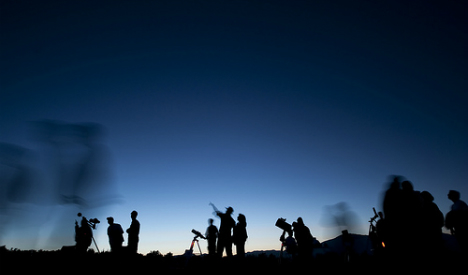When:
The shower has been active since the 13th of July and will continue until the end of August. But activity will peak on Wednesday night (August 12-13th), the day before a new moon, meaning the skies will be darker than usual and the shooting stars more visible.
“A very dark place, a cloudless sky, and a little patience is all you need for good stargazing,” writes the director of Spain's National Astronomical Observatory Rafael Bachiller in El Mundo who predicts you could see up to one hundred shooting stars in an hour.
Stay up late or even rise early as some of the best showings occur just before dawn.
Where:
The meteorite shower is visible across the northern hemisphere but will be especially good in southern Europe.
Find a place as far away from light pollution as possible so head to wide open spaces away from the city. Mountains and beaches are perfect. Then face northeast and enjoy the show.
How:
The shooting stars are visible to the naked eye so no need for binoculars or a telescope but allow yourself to become accustomed to the darkness which usually takes around 20 minutes. And have patience as the shower comes in spurts – nothing for a while and then a sudden flurry of activity.

What it is:
In Spanish the phenomenon is known as Lágrimas de San Lorenzo – the tears of St Lawrence – because the best viewing nights often occur around the feast day on August 10th of the Spanish saint martyred in 258 AD.
Shooting stars are caused by tiny flecks of comet hitting the earth’s atmosphere. The Perseids occur annually when the orbit of Earth crosses into the tail of the comet Swift-Tuttle.
Guia para observar las #Perseidas 2015 http://t.co/eFnLFwk479 via @AstroyFisica pic.twitter.com/4Ab8j8Afm8
— Planetario de Madrid (@PlanetarioMad) August 10, 2015
The Perseids are named after the constellation Perseus because that is where the meteors seem to originate from when looking up at the sky.
Nasa advises: “If you see one meteor shower this year, make it August's Perseids or December's Geminids. The Perseids feature fast and bright meteors that frequently leave trains, and in 2015 there will be no moonlight to upstage the shower.”



 Please whitelist us to continue reading.
Please whitelist us to continue reading.
Member comments